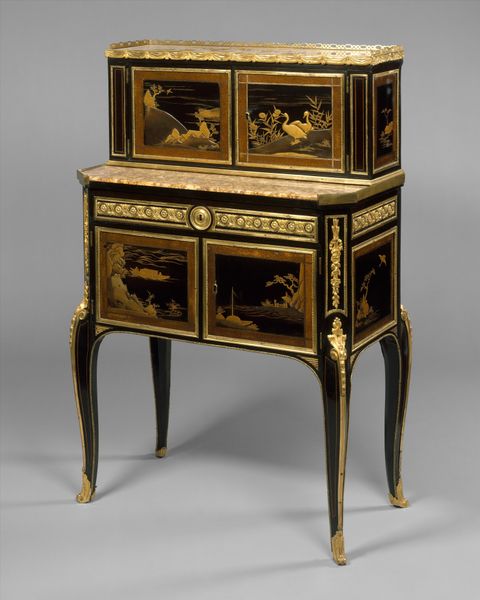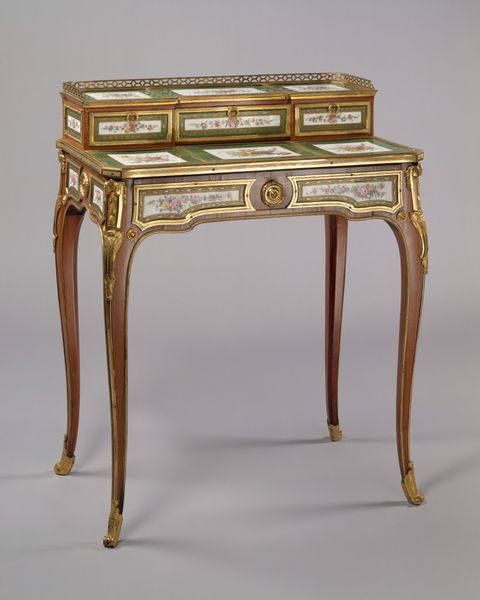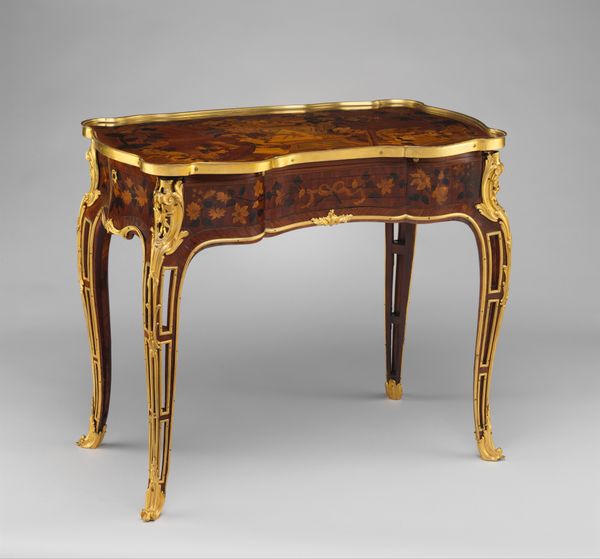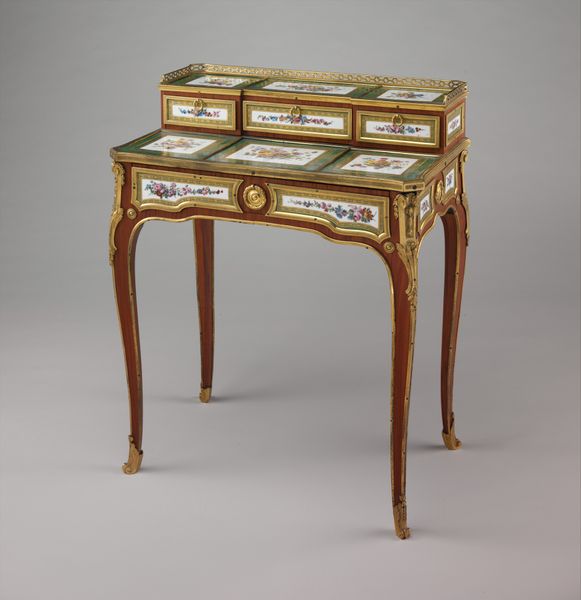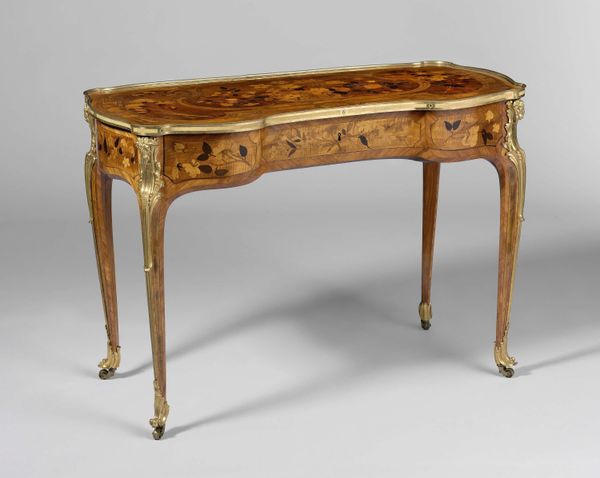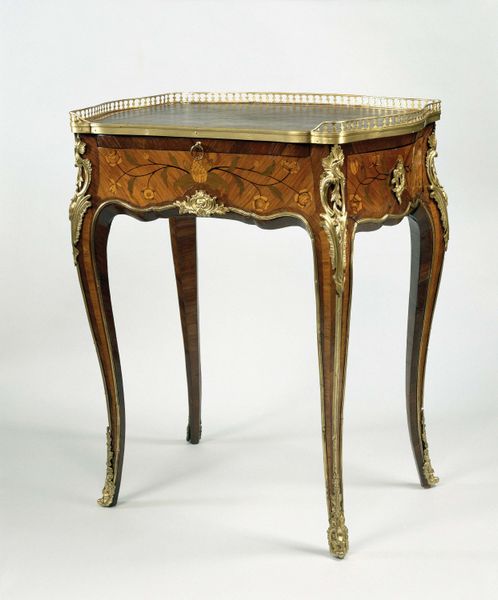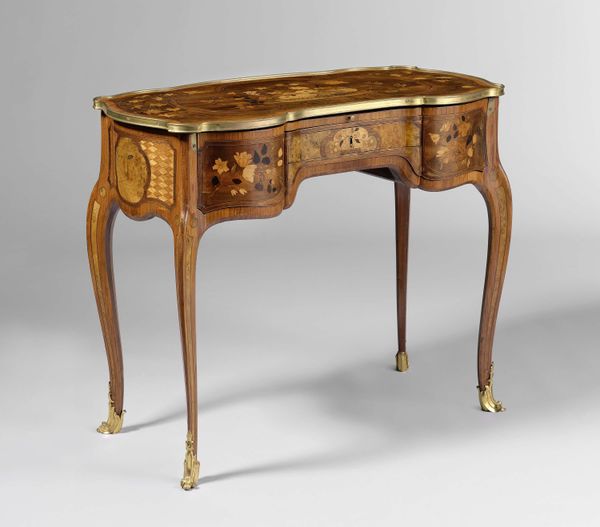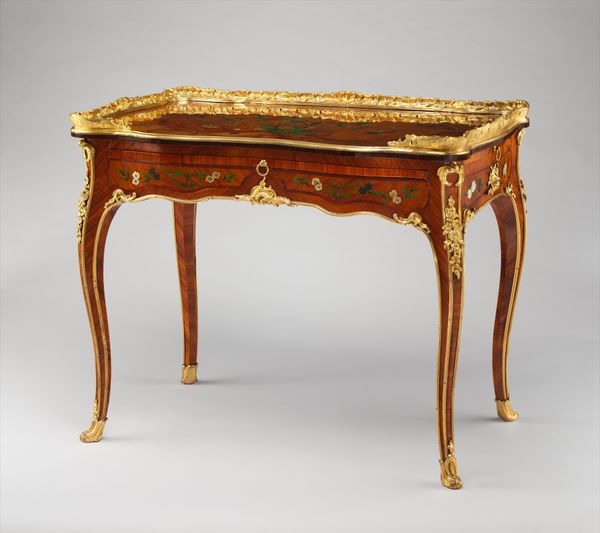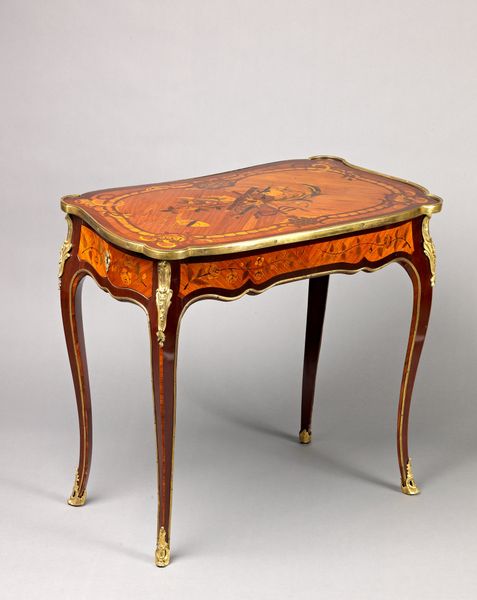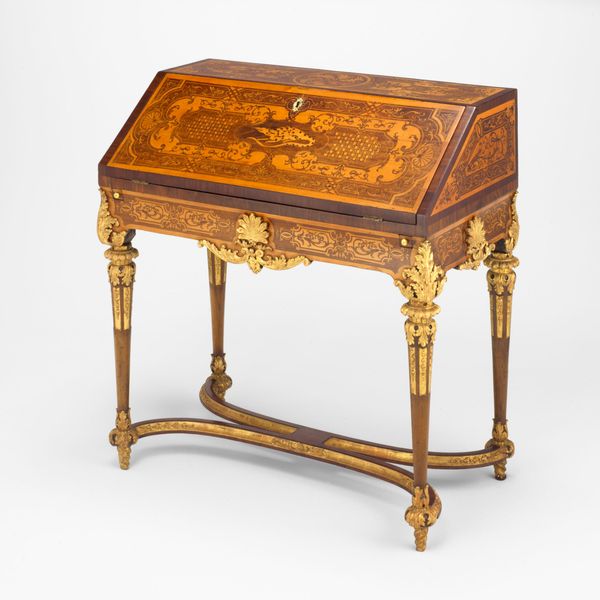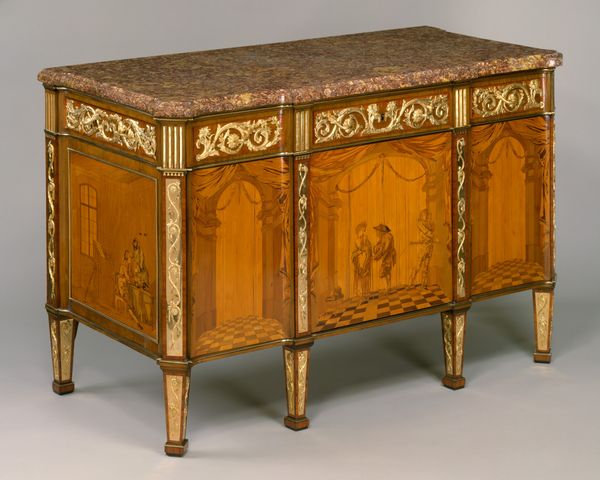
mixed-media, carving, metal, sculpture, wood
#
mixed-media
#
carving
#
metal
#
sculpture
#
furniture
#
sculpture
#
wood
#
metal and woodwork
#
decorative-art
#
rococo
#
statue
Dimensions: 29-1/4 x 24 x 15-1/2 in. (74.3 x 61.0 x 39.4 cm)
Copyright: Public Domain
Editor: This is the Mechanical table à la Bourgogne, crafted between 1755 and 1765 by René Dubois. It's a striking piece of mixed media, combining wood, metal, and intricate carving. There is an overt and pronounced expression of opulence in it; how do you unpack this Rococo piece, particularly its overt, almost performative wealth display? Curator: It's crucial to consider the French court when assessing this piece. The Rococo style, while visually delightful, also reflects a society grappling with extreme inequality. The elite, shielded in Versailles, commissioned works that effectively broadcasted their dominance. Dubois's table, dripping with ornamentation, becomes a symptom of a deeply unequal societal structure. What message do you think this kind of work sends to a population facing poverty? Editor: I hadn't considered it quite that way before. Perhaps that the rich don't care or they want to flaunt? It’s one thing to have nice furniture, it is another to make sure the less fortunate can see how nice it is, and therefore how little they have. Curator: Exactly. This wasn't accidental; it was a visual language. Now consider the ‘mechanical’ aspect. Ostensibly it's functional—but what kind of function? How does labour play into the conception and reception of the table? What were the political and social repercussions of such decadence and elitist patronage in pre-revolutionary France? Editor: It’s almost a slap in the face of common sense. To see a simple thing like a table treated like some kingly scepter seems so decadent. How many artisans would it take to make this versus more necessary objects? Curator: Indeed, and who were these artisans, what was their place in society? Were their names recorded alongside Dubois' as important contributors? Think about their roles, their social standing and how these material realities influence how we study the table and interpret its function. Editor: I never thought of something so lovely as an expression of domination, but I suppose art can do both. Curator: Precisely, recognizing that tension—that’s where understanding begins. It allows us to have more grounded conversations, placing the piece within a larger historical narrative that isn’t limited by beauty.
Comments
No comments
Be the first to comment and join the conversation on the ultimate creative platform.

